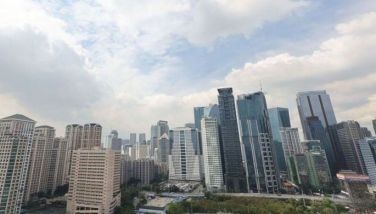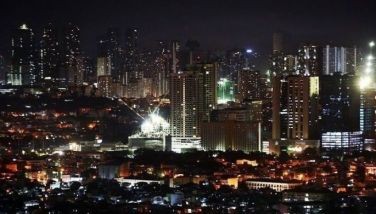June inflation falls to 22-year low of 1.5%
MANILA, Philippines - Philippine consumer prices rose at their slowest in 22 years, giving the Bangko Sentral ng Pilipinas (BSP) more leeway to cut its policy rate to a record low of four percent this week to spur economic growth.
The National Statistics Office reported that the national average inflation rate fell to 1.5 percent in June, bringing the average rate down to five percent for the first half of the year.
BSP Governor Amando M. Tetangco Jr. said the June inflation rate confirmed official projections that the inflation rate would fall within the official target in 2009 and 2010.
“It gives the central bank room to ease further,” Tetangco said, adding that the current assessments of the Bangko Sentral ng Pilipinas showed risks to inflation tilted towards the downside.
But Tetangco cautioned that the BSP is watching the actions of other central banks in major economies as they prepare to unwind previous monetary initiatives that released liquidity and eased credit in major markets.
“We are mindful of global and domestic financial and real sector developments,” Tetangco said. “We are watching other central banks because these actions are critical and weigh heavily on how the global imbalances would eventually correct.”
Eventually, Tetangco said these moves would influence how emerging markets like the Philippines would come out of the global economic crisis.
The BSP has been talking about its own exit strategy but Tetangco’s statement confirmed market expectations that monetary officials could be setting up for one final move this week before holding steady going forward.
The BSP, however, would have to consider how the economy would perform in the second quarter of the year since its monetary policy moves would also have to ensure continued growth while avoiding inflation fears.
But the NSO said in its report that the decline in the prices of fuel, light and water continued in June along with the deceleration in the price increments of all the other commodity groups.
The June inflation rate came down from 3.3 percent in May and the NSO said this was the lowest inflation rate since April 1987 when the rate was recorded at 1 percent. Inflation a year ago was 11.4 percent.
Excluding selected food and energy items, core inflation continued to go down to 3.9 percent in June from 4.4 percent in May, bringing the six-month average core inflation rate to 5.4 percent.
The NSO said the inflation rate in the National Capital Region (NCR) dropped to -0.1 percent in June from 0.8 percent in May, caused by the decline in FLW and services index as well as the slowing down in the annual growth rates for the rest of the commodity groups.
On the other hand, the annual price movements in Areas Outside the National Capital Region (AONCR) went down to 2.2 percent in June from 4.2 in May. This was attributed to the continued negative annual growth rate posted in FLW index along with the downward annual price increases in all the other commodity groups.
Although the inflation rate would drop down to low single-digit levels, Tetangco has ruled out the possibility of deflation even with the economy likely to go into recession this year, indicating further monetary easing down the road.
Tetangco said inflation was heading downwards but there are still no indications that prices of basic commodities would actually start declining.
The inflation rate is a measure of increases in the prices of basic commodities. The higher the rate, the faster prices are increasing. When price increases slow down, the rate drops and when the inflation rate turns negative, it means prices have actually started declining.
But Tetangco said it was unlikely that the inflation rate would turn negative, especially with the world prices of oil starting to go up again.
“At the moment, we see inflation still trending downward, and falling to within target for both 2009 and 2010,” Tetangco said earlier. “While we have reduced our forecasts on inflation, we still don’t see a situation of deflation.”
“As such, there is room for policy to continue to be accommodative,” Tetangco added. “Our primary mandate is price stability, so monetary policy will continue to be determined by our assessment of the risks to inflation.”
- Latest
- Trending






























